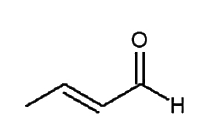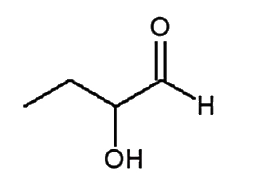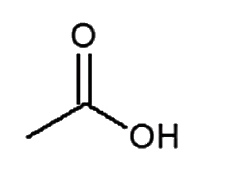H−C≡C−HHgSO4−−−→H2SO4(A)(1)NH3+HCN−−−−−−−−−→(2)H3O⊕(B), Product (B) of given reaction is :
Glycine
Alanine
valine
Leucine
The correct Answer is:B
To solve the problem step by step, we will analyze the given reactions and identify the product (B) formed from the starting material.
Step 1: Identify the starting material
The starting material is H-C≡C-H, which is ethyne (acetylene).
Step 2: First Reaction with H₂SO₄ and HgSO₄
When ethyne is treated with sulfuric acid (H₂SO₄) in the presence of mercury(II) sulfate (HgSO₄), it undergoes hydration to form an intermediate enol, which then tautomerizes to form a ketone. The reaction can be summarized as follows:
- Ethyne reacts with H₂SO₄ and HgSO₄ to form acetaldehyde (CH₃CHO).
Step 3: Hydrolysis
The product from the first step (acetaldehyde) can undergo hydrolysis. However, in this case, the hydrolysis is not necessary as we already have the aldehyde.
Step 4: Reaction with NH₃ and HCN
Next, acetaldehyde reacts with ammonia (NH₃) and hydrogen cyanide (HCN). This reaction leads to the formation of a cyanohydrin. The cyanohydrin will have the following structure:
- The carbonyl carbon of acetaldehyde will bond with NH₂ from ammonia and CN from HCN, resulting in the formation of a compound with an amino group (NH₂) and a cyano group (CN).
Step 5: Final Product Formation
Upon hydrolysis of the cyanohydrin, the cyano group (CN) will be converted into a carboxylic acid (COOH). The final product will have the structure:
- CH₃-CH(NH₂)-COOH, which is the structure of alanine.
Conclusion
Thus, the product (B) of the given reaction is alanine.
Final Answer
Product (B) is alanine.
---
The starting material is H-C≡C-H, which is ethyne (acetylene).
When ethyne is treated with sulfuric acid (H₂SO₄) in the presence of mercury(II) sulfate (HgSO₄), it undergoes hydration to form an intermediate enol, which then tautomerizes to form a ketone. The reaction can be summarized as follows:
- Ethyne reacts with H₂SO₄ and HgSO₄ to form acetaldehyde (CH₃CHO).
The product from the first step (acetaldehyde) can undergo hydrolysis. However, in this case, the hydrolysis is not necessary as we already have the aldehyde.
Next, acetaldehyde reacts with ammonia (NH₃) and hydrogen cyanide (HCN). This reaction leads to the formation of a cyanohydrin. The cyanohydrin will have the following structure:
- The carbonyl carbon of acetaldehyde will bond with NH₂ from ammonia and CN from HCN, resulting in the formation of a compound with an amino group (NH₂) and a cyano group (CN).
Upon hydrolysis of the cyanohydrin, the cyano group (CN) will be converted into a carboxylic acid (COOH). The final product will have the structure:
- CH₃-CH(NH₂)-COOH, which is the structure of alanine.
Thus, the product (B) of the given reaction is alanine.
Product (B) is alanine.
Topper's Solved these Questions
- BOOK - MS CHOUHANCHAPTER - BIOMOLECULESEXERCISE - Level 1 (Q.31 To Q.50)1videos
BIOMOLECULES
- BOOK - MS CHOUHANCHAPTER - BIOMOLECULESEXERCISE - Level 21videos
BIOMOLECULES
- BOOK - MS CHOUHANCHAPTER - AROMATIC COMPOUNDSEXERCISE - Additional Objective Questions (Matrix Match Type)2videos
AROMATIC COMPOUNDS
- BOOK - MS CHOUHANCHAPTER - CARBENE AND CARBENOIDSEXERCISE - ADDITIONAL OBJECTIVE QUESTIONS (Single Correct Choice Type)26videos
CARBENE AND CARBENOIDS
Similar Questions
Knowledge Check
- Question 1 - Select One
H−C≡C−HHgSO4−−−−−−→H2SO4dil.NaOH−−−−−→Δ−−→P. The final product P is
A B
B C
C D
D
- Question 2 - Select One
CH3−C≡CHHgSO4−−−→H2SO4(A),
CH3−C≡C−CH3HgSO4−−−→H2SO4(B)
Relation between (A) and (B)APosition isomerBFunctional isomersCHomologousDMetamers - Question 3 - Select One
Consider the following sequence of reactions.
C6H6+CH3CH=CH2H3PO4−−−→heatA1.O2,heat−−−−−→2.H3O+B+C
The products (B) and (C) are:Abenzaldehyde and acetaldehydeBbenzoic acid and acetic acidCphenol and propionadehydeDphenol and acetone
CH3−C∣∣O−CH3I2−−−−→Na2CO3(A)Ag powder−−−−−→(B)H2SO4−−−→Hg++(C) Product A,B & C are -
View SolutionConsider the following sequence of reactions
C2H5C≡CHCH3MgBr−−−−−→A(1)HCHO−−−−−−→(2)H2O+B
The product (B) isView SolutionHNO3/H2SO4−−−−−−−−→ANaOH−−−−−→433KB, B is
 View Solution
View SolutionC6H5(CH2)5O∣∣C−ClAlCl3−−→CS2(A)C12H14OKMnO4,D−−−−−−→H3O⊕(B), Compound (B) is:
View SolutionCH3CH=CH2HBr−−−−→Peroxide(A)Mg−−→(B)(1)CO2−−−−−−−−→(2)H2O/H+(C),(C) is
View Solution

